Configuring authentication challenge policies
Configure an authentication challenge policy in PingAccess to set the response that PingAccess sends when it receives unauthenticated requests for protected resources.
Steps
-
Click Access and then go to Authentication > Authentication Challenge Policies.
-
Click Add Authentication Challenge Policy.
-
In the Name field, enter a unique name for the authentication challenge policy.
-
(Optional) In the Description field, enter a description for the authentication challenge policy.
-
In the Challenge Response Mapping list, select a mapping type:
The MS-OFBA challenge response mapping examines
OPTIONS HTTPmethod requests to determine if the user agent is a client that supports Microsoft’s MS-OFBA protocol or if the request has a Boolean flag indicating that it supports MS-OFBA.
PingAccess provides an MS-OFBA authentication challenge policy that’s included with the system by default. As such, the MS-OFBA challenge response mapping is best used to address edge cases as they come up. For more information, see Authentication.
-
If you selected the Content Negotiation mapping type, in the Media Types list, select one or more media types.
The selection options for media types are application/json, text/html, text/plain, or text/xml.

Result:
If the
Acceptheader field in the request matches any of the specified media types, the mapping is applied. -
If you selected the Header Fields mapping type, click Add Row to add one or more rows, and then in the Name and Value Pattern fields, enter a name and value pattern for each row.

Result:
If all of the specified header fields in the request match the specified value patterns, the mapping is applied.
-
-
Configure a challenge response generator for the challenge response mapping:
-
In the Challenge Response Generator list, select a challenge response generator.
You can find more information in Authentication challenge responses and Authentication challenge response generator descriptions.
-
(Optional) If you selected Browser-handled OIDC Authentication Request, HTML OIDC Authentication Request, MS-OFBA Authentication Request Redirect, OIDC Authentication Request Redirect, or PingFederate Authentication API Challenge, you can select one of the following options from the Prompt Request Parameter list to let the authorization server know whether to prompt an end-user to reauthenticate or provide consent.
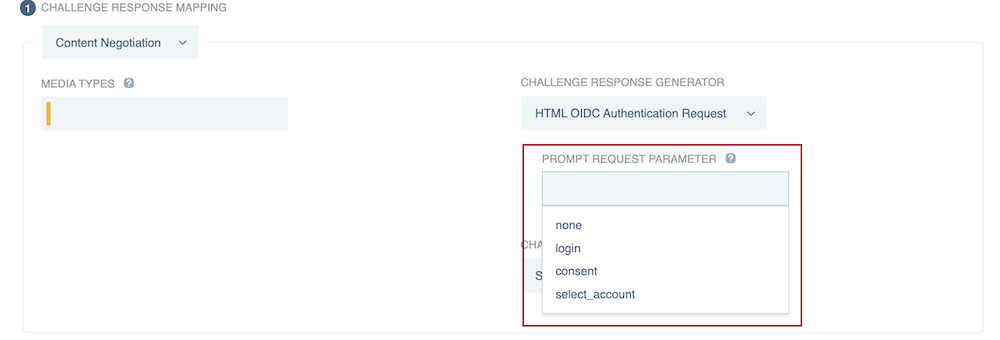
- none
-
Returns an error if the end-user isn’t authenticated or if the OAuth client doesn’t have user consent for the requested claims. The authorization server doesn’t prompt the end-user with a consent or authentication page if this option is selected.
- login
-
The authorization server prompts the end-user to reauthenticate. If the end-user doesn’t reauthenticate successfully, it returns an error.
For extra security, PingAccess validates the <auth_time> the login request was sent at against the <auth_time> the OpenID Provider (OP) sets in the response.
- consent
-
The authorization server prompts the end-user for consent before giving information to the OAuth client. If the end-user doesn’t give their consent, it returns an error.
- select_account
-
The authorization server prompts the end-user to specify which account they are using, in case they have multiple accounts. If the end-user doesn’t select an account, it returns an error.
If you are using PingFederate as the OP, you should also enable push authorization requests on the web session you want to use with this authentication challenge policy. This advanced setting provides an additional layer of security against frontchannel tampering. For more information, see Enable Push Authorization in Creating web sessions.
You can set the Prompt Request Parameter in two places: on the web session or on one of the OpenID Connect (OIDC) authentication challenge response generators. A value set on a specific authentication challenge response generator takes precedence over one set on a web session.
-
(Optional) If you selected OIDC Authentication Request Redirect, Redirect Challenge, or Templated Challenge, you can configure PingAccess to let the authentication authority know why a user was redirected to it:
-
Go to the Web Sessions page and expand the web session that you want to edit.
If you selected Redirect Challenge, make sure that you select the Append Redirect Parameters check box in step 6d.
If you selected Templated Challenge and are using PingFederate as an authentication source, make sure that you connect to PingFederate’s redirectless OIDC flow.
-
Click the pencil icon (), and then select the Provide Authentication Feedback check box under Advanced Settings.
You can find more information about the feedback PingAccess can provide in Creating web sessions.
An OIDC Authentication Request Redirect issues the feedback key
vnd_pi_authn_feedback. The feedback key issued by an Redirect Challenge isauthnFeedback, and the feedback key issued by an Templated Challenge response generator isoidc.authnFeedback.
-
-
If you selected Redirect Challenge, enter a Redirect URL and select a Response Code for the redirect.
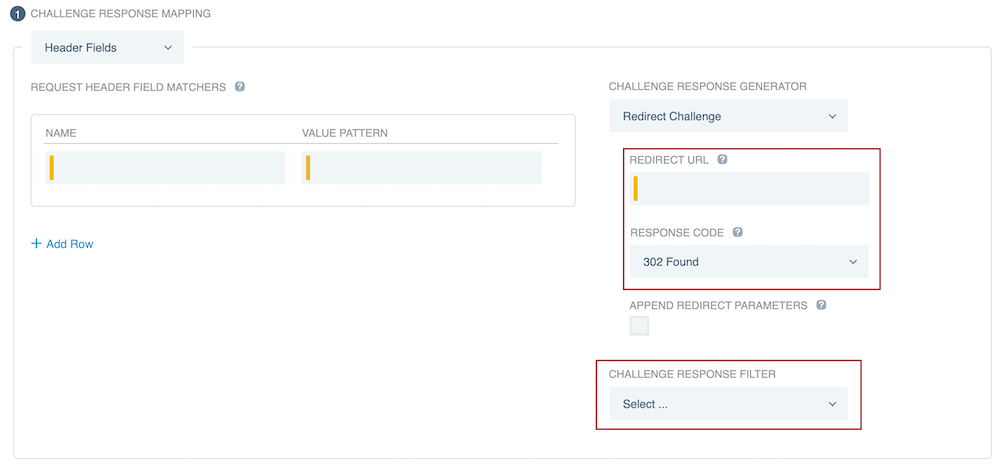
Optionally, select the Append Redirect Parameters check box to append PingFederate OIDC parameters and the Uniform Resource Locator (URL) of a requested resource within the query string of a redirect URL that you specify. For more information, see the Redirect Challenge table entry in Authentication challenge response generator descriptions.
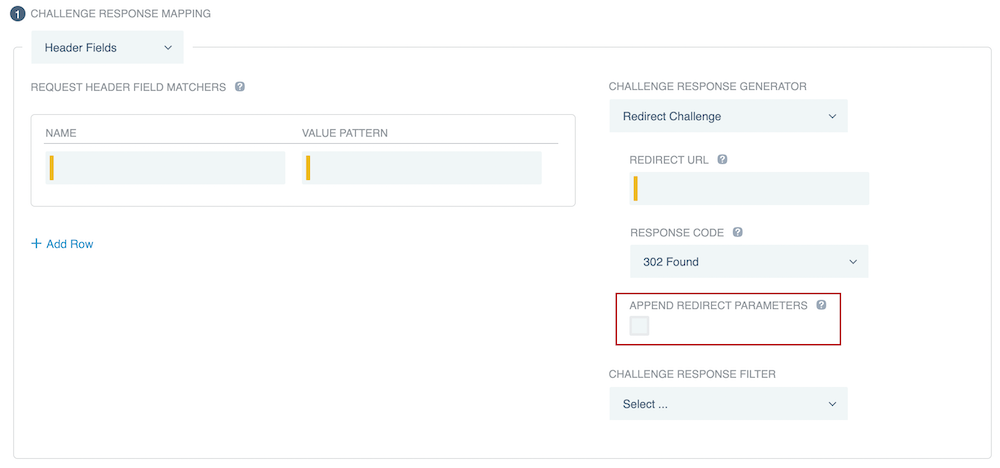
-
If you selected Templated Challenge, select a Response Code and Media Type for the template, and then enter the template in the Template field.
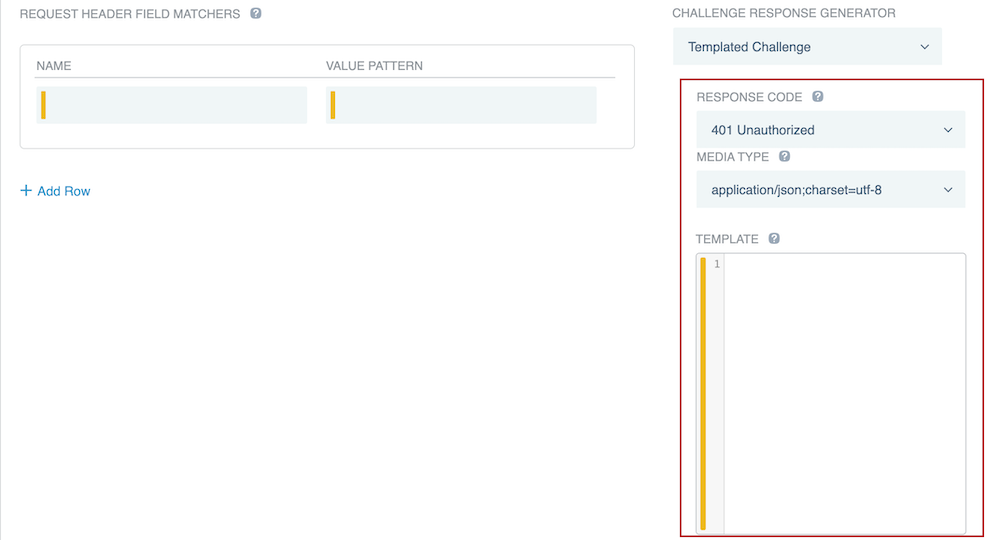
-
In the Challenge Response Filter list, select a challenge response filter.
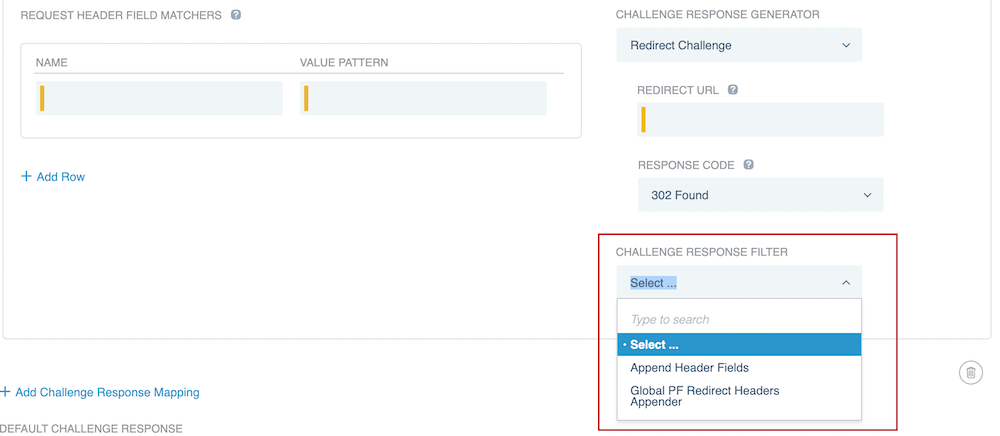
-
If you selected Append Header Fields, click Add Row.
Enter a Name and Value in each row.
-
If you selected Global PF Redirect Headers Appender, then PingAccess will add the headers defined by the
pf.redirect.headersin<PA_HOME>/conf/run.propertiesas described by the Configuration file reference.Result:
The specified HTTP response header fields are appended to the authentication challenge response.
-
-
-
(Optional) To add additional challenge response mappings, click Add Challenge Response Mapping, then repeat steps 5 and 6.
-
In the Default Challenge Response section, select a default challenge response.
PingAccess uses this challenge response if no other challenge responses apply.
-
In the Challenge Response Generator list, select a challenge response generator.

-
(Optional) If you selected Browser-handled OIDC Authentication Request, HTML OIDC Authentication Request, MS-OFBA Authentication Request Redirect, OIDC Authentication Request Redirect, or PingFederate Authentication API Challenge, you can select one of the following options from the Prompt Request Parameter list to let the authorization server know whether to prompt an end-user to reauthenticate or provide consent.

- none
-
Returns an error if the end-user isn’t authenticated or if the OAuth client doesn’t have user consent for the requested claims. The authorization server doesn’t prompt the end-user with a consent or authentication page if this option is selected.
- login
-
The authorization server prompts the end-user to reauthenticate. If the end-user doesn’t reauthenticate successfully, it returns an error.
For extra security, PingAccess validates the <auth_time> the login request was sent at against the <auth_time> the OP sets in the response.
- consent
-
The authorization server prompts the end-user for consent before giving information to the OAuth client. If the end-user doesn’t give their consent, it returns an error.
- select_account
-
The authorization server prompts the end-user to specify which account they are using, in case they have multiple accounts. If the end-user doesn’t select an account, it returns an error.
If you are using PingFederate as the OP, you should also enable push authorization requests on the web session you want to use with this authentication challenge policy. This advanced setting provides an additional layer of security against frontchannel tampering. For more information, see Enable Push Authorization in Creating web sessions.
You can set the Prompt Request Parameter in two places: on the web session or on one of the OIDC authentication challenge response generators. A value set on a specific authentication challenge response generator takes precedence over one set on a web session.
-
(Optional) If you selected OIDC Authentication Request Redirect, Redirect Challenge, or Templated Challenge, you can configure PingAccess to let the authentication authority know why a user was redirected to it.
-
Go to the Web Sessions page and expand the web session that you want to edit.
If you selected Redirect Challenge, make sure that you select the Append Redirect Parameters check box in step 8d.
If you selected Templated Challenge and are using PingFederate as an authentication source, make sure that you connect to PingFederate’s redirectless OIDC flow.
-
Click the pencil icon (), and then select the Provide Authentication Feedback check box under Advanced Settings.
You can find more information about the feedback PingAccess can provide in Creating web sessions.
An OIDC Authentication Request Redirect issues the feedback key
vnd_pi_authn_feedback. The feedback key issued by an Redirect Challenge isauthnFeedback, and the feedback key issued by an Templated Challenge response generator isoidc.authnFeedback. -
-
If you selected Redirect Challenge, enter a Redirect URL and select a Response Code for the redirect.
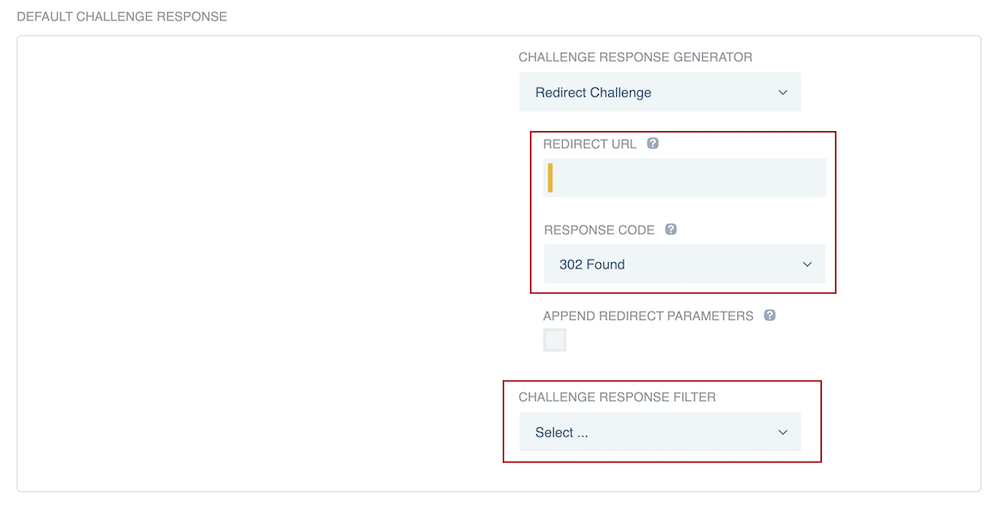
Optionally, select the Append Redirect Parameters check box to append PingFederate OIDC parameters and the URL of a requested resource within the query string of a redirect URL that you specify. For more information, see the Redirect Challenge table entry in Authentication challenge response generator descriptions.
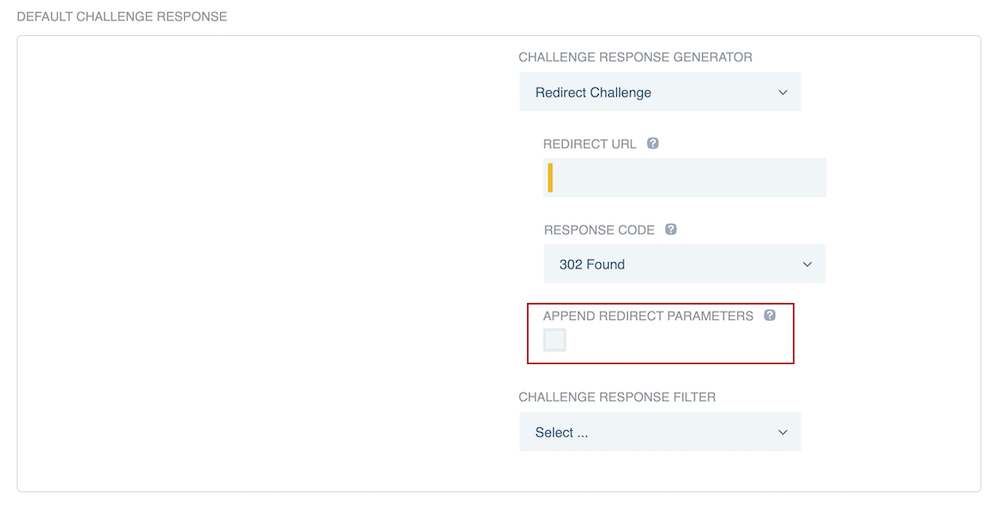
-
If you selected Templated Challenge, select a Response Code and Media Type for the template, and then enter the template in the Template field.
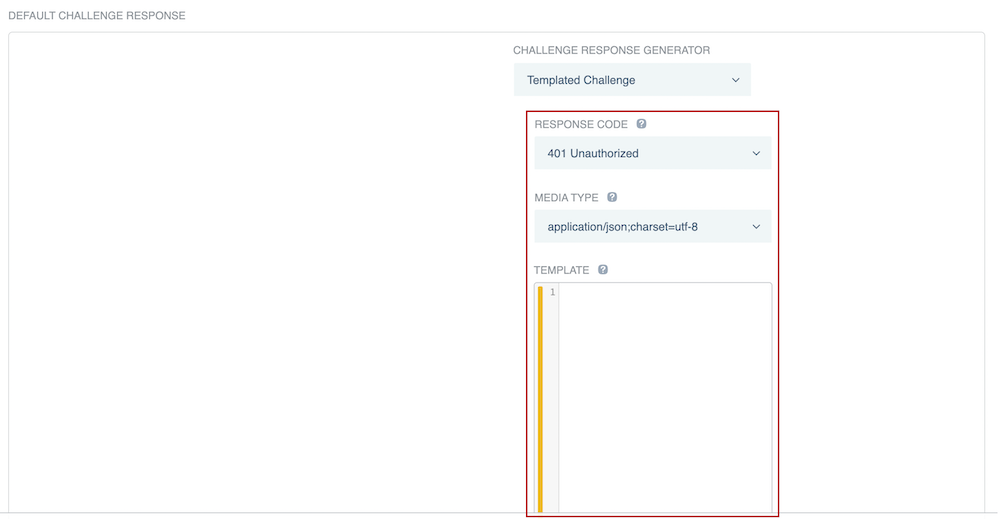
-
In the Challenge Response Filter list, select a challenge response filter.
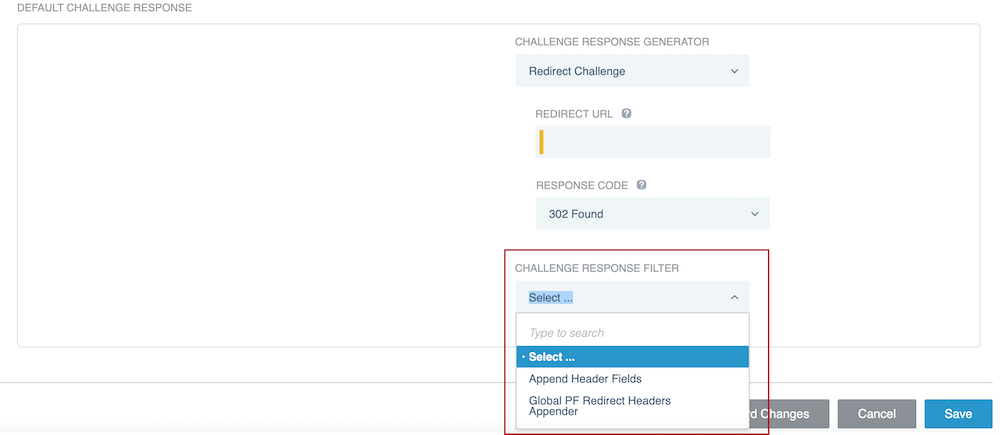
If you selected Append Header Fields, click Add Row, then enter a Name and Value in each row.
Result:
The specified HTTP response header fields are appended to the authentication challenge response.
-
-
Click Save.